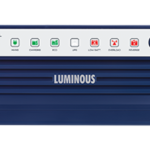The most common causes of power outages include storms, extreme heat, aging equipment, and human factors like vehicles hitting poles. Natural disasters such as earthquakes, floods, mudslides, and wildfires also disrupt the electricity grid.
Regardless of what causes the outage, be prepared. Take an inventory of the items in your home that rely on electricity and plan accordingly.
Table of Contents
Trees
With the fall season upon us, we know that changing leaves can be a problem for power lines. High winds can cause tree branches to break and come into contact with power lines or utility poles, interrupting the flow of electricity. Utility companies often have to cut down or trim trees on private property to keep them safe from power lines.
A patchwork of state and federal regulations requires utilities to regularly trim their vegetation and check for damaged or dead trees. Still, some of the country’s largest utility providers say that weather and climate conditions make this challenging. For example, drought-weakened trees can easily topple over in strong winds. In some cases, a large tree can fall on a substation, interrupting the flow of electricity.
In addition, heavy rains can cause flooding, damaging the underground and overhead equipment that delivers electricity to homes and businesses. If an area experiences flooding, it’s usually necessary to shut down power as a safety precaution. Also, vehicles that hit a power pole may knock it down or cause damage to the lines on it. While these accidents don’t affect most customers, they can still lead to a temporary outage in buildings served by that line.
Weather
When the power goes out, it affects a block, neighborhood, or sometimes an entire city. And it can last for a very long time.
Severe weather conditions can push aging electrical systems past their limits. Lightning, wind, and heavy rains can damage transmission towers, lines, and substations. Earthquakes, wildfires, floods, and mudslides are other natural reasons for outages.
Winter storms cause frequent power outages as snow and ice build-up on wires, tree limbs, and other equipment. When this build-up interrupts the flow of electricity, it can lead to a short circuit.
While it’s impossible to guard against the effects of extreme weather, we can prepare for outages and minimize their impact on our lives. The first step is understanding the types of outages that occur.
Distribution system outages are the most common reason for most outages affecting average consumers. These outages can be caused by anything from a tree limb falling on a line to a transmission system failure.
These severe outages can impact millions of people for a prolonged period. For this reason, many homeowners choose to install a backup generator in their homes. The benefits of a backup generator are clear, and it’s an excellent choice when the power is out.
Animals
When you think about power outages, the first things that come to mind are harsh weather conditions like storms and heavy snow or damage from trees that fall on power lines during a hurricane. However, it’s surprising to learn that animals can cause significant outages.
Animals infiltrate utility substations and other electrical equipment looking for food, shelter, or to explore. Animal intrusion into power stations causes many of the nation’s most expensive outages. It is a severe problem that could be prevented with effective protection strategies. Animals are attracted to the humming warmth of electrical equipment, and many species are excellent climbers. The combination of these factors leads them to trespass on electric equipment, resulting in outages lasting for hours or even days.
Squirrels are the main culprits, but other critters join them, including birds, raccoons, mice, rats, and snakes. The problem is even worse when development encroaches on animal habitats, leading them to seek shelter and food in areas where they are not expected.
A squirrel can gnaw through a wire, causing an arc that can shut down equipment or send electricity to the ground.
Equipment
Power outages can happen at any step of the electricity delivery process. It starts when high voltage transmission lines move electricity from a power plant to distribution lines that carry the power closer to homes. Damage to these lines affects more people across a larger geographic area than outages caused by trees or other weather issues.
Those transmission and distribution issues can result from lightning strikes to wayward balloons tangled in lines or mischievous squirrels looking for their new home inside substation equipment. These issues are the most frequent cause of power outages and can often leave a large area without service for long periods.
Other reasons for power outages include construction and landscaping accidents that cut utility poles or dig into underground lines. This is why you should always call before digging. Human error can also play a role in power outages. Utility workers have been known to make mistakes, knock down power lines, or accidentally shut off electricity for maintenance reasons. Then there is the ever-present threat of thieves who risk serious injury to steal copper wire for scrap value.
Power outages can also result from a power grid being overloaded with demand. This can be a problem because it prevents the system from operating optimally. When this happens, a brownout or rolling blackout is usually the result. Utilities must intentionally shut off the power to small sections of customers rotating to avoid a full grid failure.











